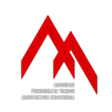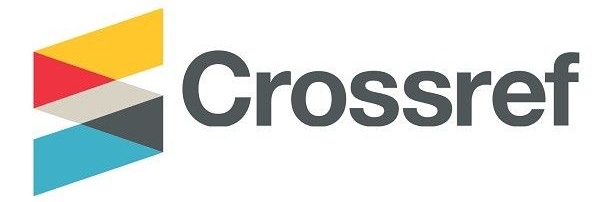Strategi Pengembangan Wisata Edukasi pada Candi Sambisari di Kabupaten Sleman
DOI:
https://doi.org/10.21776/ub.ruas.2023.021.01.5Keywords:
development strategy, educational tourism, Sambisari TempleAbstract
There is a shift in tourist interest in an environmentally friendly tour, including interest in educational tourism. Tourists are more interested in natural scenery and the lack of interest in historical tourism is an obstacle for Sambisari Temple, especially if it is seen as a site of historical and cultural value, Sambisari Temple has the potential to be developed into educational tourism. This study aims to recommend educational tourism development strategies in educational tourism of Sambisari Temple. Data analysis was carried out with descriptive techniques on the potential of Sambisari Temple. In the next stage, a SWOT analysis is carried out. The result is that the development strategy can be carried out by conducting periodic checks on buildings and areas around the temple, especially during the rainy season, involving tourists in the learning process in making tour packages, providing space for tourists to explore attractions accompanied by a tour guide, promoting temple educational tours through websites or social media, establishing more intensive cooperation and collaboration with the government, improve the quality and quantity of visitor facilities, create a mini museum and other supporting facilities such as ATMs in the Sambisari Temple complex.
References
Batubara, B. M. (2018). Hubungan Komunikasi Badan Perwakilan Desa terhadap Partisipasi Masyarakat dalam Pembangunan. Ilmu Pemerintah Dan Sosial Politik, 1(1), 65–76.
Groat, L. N., & Wang, D. (2013). Case studies and combined strategies. In Architectural research methods (pp. 415–451). https://ezp.lib.unimelb.edu.au/login?url=https://search.ebscohost.com/login.aspx?direct=true&db=cat00006a&AN=melb.b4817576&scope=site
Islami, F. S., Sugiharti, R. R., & Prakoso, J. A. (2021). Strategi Pengembangan Wisata Candi Umbul Kecamatan Grabag Kabupaten Magelang. Indicators : Journal of Economic and Business, 2(1), 208–216. https://doi.org/10.47729/indicators.v2i1.65
Miandehi, P. M., & Masrouri, M. Y. (2013). Assessment of SWOT model on tourism industry in sustainable development of rural areas: Case study on Bandar-E Anzali. World Applied Sciences Journal, 21(3), 455–464.
Moleong, L. J. (2015). Metodologi Penelitian Kualitatif, Cetakan 34. ed. PT Remaja Rosdakarya.
Prasetyo, D., Manik, T. S., & Riyanti, D. (2021). Pemanfaatan Museum Sebagai Objek Wisata Edukasi. Kepariwisataan: Jurnal Ilmiah, 15(01), 1–11. https://doi.org/10.47256/kepariwisataan.v15i01.146
Prastiwi, S. (2016). Manajemen Strategi Dinas Kebudayaan Dan Pariwisata Kabupaten Bojonegoro Dalm Mengembangkan Potensi Objek Wisata Edukasi Little Teksas Wonocolo. Publika, 4(11).
Pratiwi, M. A., Giriwati, N. S. S., Yusran, Y. A., & Santosa, H. (2022). Strategi Pengembangan Kampung Topeng Malang sebagai Kampung Wisata Budaya. Review of Urbanism and Architectural Studies, 20(2), 85–96. https://doi.org/10.21776/ub.ruas.2022.020.02.8
Saepudin, E., Budiono, A., & Halimah, M. (2019). Pengembangan Desa Wisata Pendidikan Di Desa Cibodas Kabupaten Bandung Barat. Sosiohumaniora, 21(1), 1. https://doi.org/10.24198/sosiohumaniora.v21i1.19016
Sarsby, A. (2016). SWOT analysis. Lulu. com.
Sukmadewi, N. P. R., Darma Putra, I. N., & Suardana, I. W. (2019). Potensi Dan Pengembangan Desa Wisata Suranadi Di Kecamatan Narmada Kabupaten Lombok Barat. Jurnal Master Pariwisata (JUMPA), January, 424. https://doi.org/10.24843/jumpa.2018.v05.i02.p12
Suwena, I. K., & Widyatmaja, I. G. N. (2010). Pengetahuan Dasar Ilmu Pariwisata. 252.
Swasta & Irwana. (2014). Strategi Marketing Wisata Wedding Sebagai Destinasi Alternatif. Jurnal Manajemen Dan Bisnis-Undiknas Graduate School, 11(1), 17–34.
Titisari, E. Y. (2021). Basic aspects of territorial identity (terraphilia) towards proportional tourism development. IOP Conference Series: Earth and Environmental Science, 780(1). https://doi.org/10.1088/1755-1315/780/1/012069
Titisari, E. Y., Azizah, S., Kurniawan, S., Ridjal, A. M., & Yuniarti, R. (2022). The Strategy of Organic Farming Implementation through Waste Bio-Conversion in Developing Baran Edu-Tourism Kampung, Malang, Indonesia. Universal Journal of Agricultural Research, 10(4), 388–396. https://doi.org/DOI: 10.13189/ujar.2022.100408
Downloads
Published
How to Cite
Issue
Section
License
Copyright (c) 2023 Pipiet Arini Putri, Novi Sunu Sri Giriwati, Yusfan Adeputera Yusran, Herry Santosa

This work is licensed under a Creative Commons Attribution 4.0 International License.
Authors who publish with this journal agree to the following terms:
- Authors retain copyright and grant the journal right of first publication with the work simultaneously licensed under a Creative Commons Attribution License that allows others to share the work with an acknowledgement of the work's authorship and initial publication in this journal.
- Authors are able to enter into separate, additional contractual arrangements for the non-exclusive distribution of the journal's published version of the work (e.g., post it to an institutional repository or publish it in a book), with an acknowledgement of its initial publication in this journal.
- Authors are permitted and encouraged to post their work online (e.g., in institutional repositories or on their website) prior to and during the submission process, as it can lead to productive exchanges, as well as earlier and greater citation of published work (See The Effect of Open Access).












